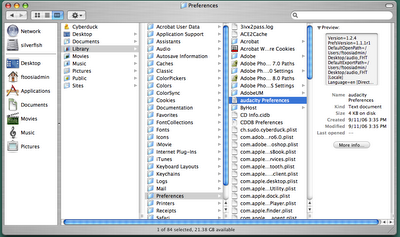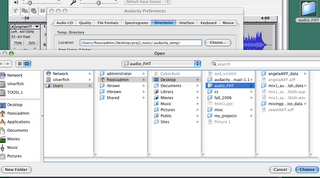W/Th 24/25 Jan
-Bart Simpson audacity tutorial due. Unless you are working from home on a PC you can skip the part about installing the program.
-blog about one of the sound art projects listed above, under "sound art links"
-in-class: intro to audio principles slide show and digital basics, continued
M/Tu 29/30 Jan
Mon. Jan. 29, 4:30 pm LIBRARY 321 - Lance Winn: drawing, robotics, sculpture
exercise 1 due: an audio re-mix using 3 samples from The Freesound Project. You will need an account to download the audio files. Requirements: You may only use .WAV or .AIFF files - no MP3s. Final mix-down will be at least 30 seconds long, with at least 2 tracks of audio. Bring your WAV/AIFF file and the original 3 files to class saved to your flash drive. The attribution aspect of the Creative Commons license requires you to give credit to the original authors, so you will need the names of the users who provided the files for your project. The easiest way to keep track is to make sure that you don't re-name the files you download from Freesound.
W/Th 31 Jan/1 Feb
-writen concept summary + proposal for audio project due - post this to your blog
-Lynda.com tutorial fee due
M/Tu 5/6 Feb
- Gather sounds for your project. Equipment may be checked out from Media Services for recording.
- Post to your blog about the Janet Cardiff radio interview (#1 below) and respond to how she uses the
three-level spatial structure in her piece (#2 below). This is described on the class handout.
Do not multitask while you do this. Treat it as if you are studying an essay. Folding your socks is possible, but trying to write email or do other homework while you listen is
not OK.
-in class: discussion about Janet Cardiff & studio time to work on projects
1-
radio piece about Janet Cardiff2-
her project for Whitechapel Gallery in LondonW/Th 7/8 FEBRUARY
final audio project due (see post with project description)


